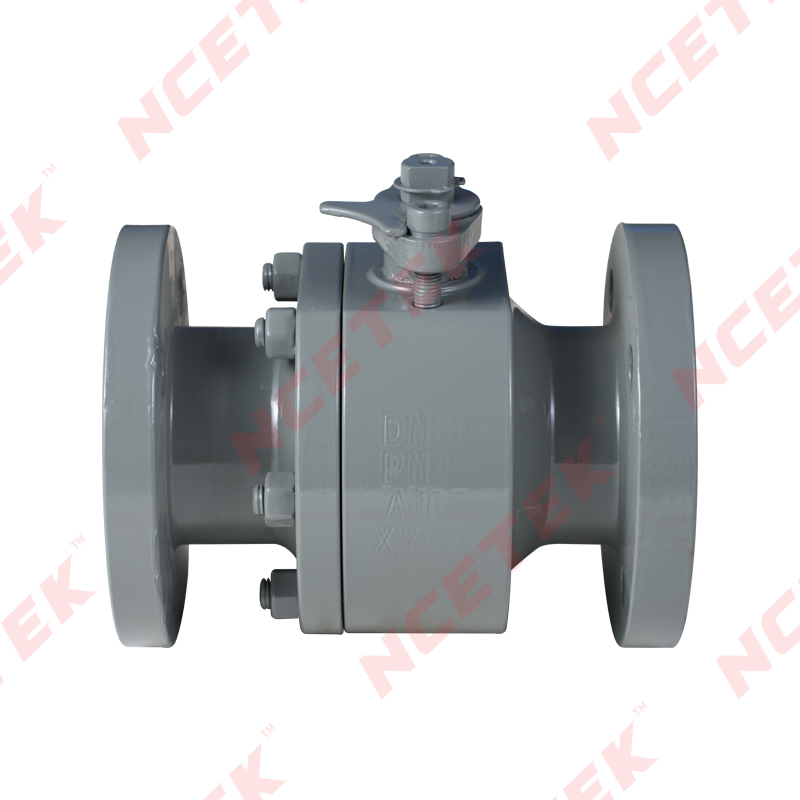In the demanding world of industrial fluid handling, the Forged Steel Floating Ball Valve has emerged as a workhorse component, prized for its reliability, durability, and precision. From petrochemical plants to offshore platforms, this valve design is trusted to manage everything from corrosive chemicals to super-heated steam. Its forged steel construction and floating-ball sealing principle combine to create a device that meets the standards of safety and performance.
Core Design and Operation
At the heart of every Forged Steel Floating Ball Valve is a hollow, precision-machined sphere—the floating ball—that rotates 90° to open or close the flow path. When the valve is closed, upstream pressure forces the ball against a downstream seat, creating a tight, leak-free seal without the need for external actuation force. This self-energizing feature makes the Forged Steel Floating Ball Valve goodly effective in medium-pressure services up to Class 1500 (PN 250) and sizes through NPS 10 (DN 250) .
Manufacturers typically offer the valve in one-, two-, or three-piece body styles. The two-piece split-body and three-piece bolted-body versions simplify inline maintenance because the center section can be removed without disturbing the pipeline. All variants are machined from solid forgings—ASTM A105N, A182 F304/F316, or duplex grades—ensuring uniform grain flow, good mechanical properties, and freedom from the porosity that can plague cast bodies .
Pressure & Temperature Credentials
A Forged Steel Floating Ball Valve is engineered for harshs. Standard units handle temperatures from –46 °C to 500 °C by combining forged bodies with seat materials such as PTFE, RPTFE, nylon, or PEEK [^3]. High-performance variants certified to API 607 and API 6FA provide fire-safe sealing: secondary metal seats maintain shut-off even if soft inserts are destroyed in a fire. Blow-out-proof stems, anti-static devices, and low-emission packing further enhance operational safety.

Industry Applications
Wherever corrosive or hazardous fluids are transported under moderate to high pressure, the Forged Steel Floating Ball Valve proves invaluable. Refineries rely on it for isolating hydroprocessing lines; chemical plants use it for chlorine and acid service; offshore platforms depend on its compact footprint for tight module layouts . Food-grade stainless versions meet FDA and EHEDG hygiene requirements, while sour-service trims comply with NACE MR0175 for hydrogen sulfide environments.
Installation & Maintenance Advantages
The Forged Steel Floating Ball Valve offers several practical benefits. Quarter-turn operation allows rapid actuation—manually via lever or gear, or automatically with pneumatic, electric, or hydraulic actuators. End connections include RF, RTJ, butt-weld, socket-weld, and NPT threads, providing flexibility for new construction or retrofits . Because the floating ball design has few moving parts, routine maintenance is limited to seat and seal replacement, tasks that can be accomplished in minutes with the three-piece body style.
Selecting the Right Valve
Specifying a Forged Steel Floating Ball Valve begins with determining line pressure, temperature, and media compatibility. For pressures above Class 1500 or sizes beyond NPS 10, engineers typically step up to a trunnion-mounted design, but within its envelope the floating ball remains the cost-effective solution. Standards such as API 6D, ASME B16.34, and ISO 17292 govern dimensions, materials, and testing, ensuring global interchangeability and predictable performance .
Zhejiang Naishi Valve Co., Ltd. specializes in the manufacturing of a comprehensive range of ball valves, adhering to international standards such as ASME, ANSI, EN, BS, DIN, API, GB, and GOST. Our product dimensions span from DN10 to DN1600, encompassing a diverse portfolio that includes track ball valves, forged steel high-pressure gas ball valves, fully welded ball valves, floating ball valves, fixed ball valves, high-temperature wear-resistant ball valves, DBB double ball valves, and special stainless steel and high-nickel alloy ball valves. Our valves are designed to withstand a variety of conditions, including high temperatures up to 600°C, low temperatures as low as -196°C, and high pressures reaching 4500Lb, ensuring product reliability in the demanding environments.
Leveraging a well-trained team of professionals, solid technical expertise, an efficient management system, and meticulous production management, Naishi Valve is committed to delivering high-quality ball valve solutions for industries such as oil and gas transportation, urban heating, gas, petrochemicals, chemicals, energy, power stations, and metallurgy.
Contact Us